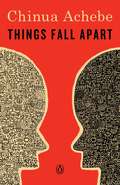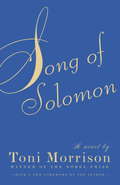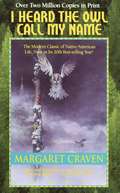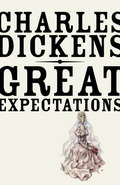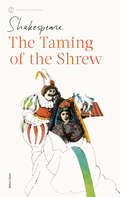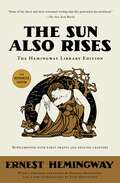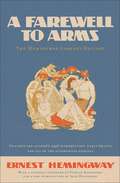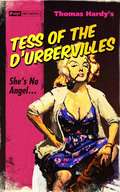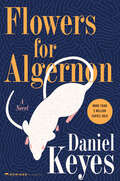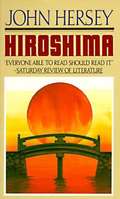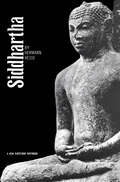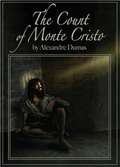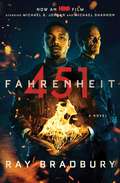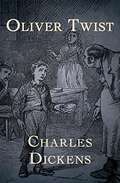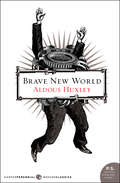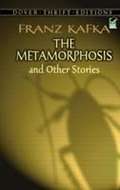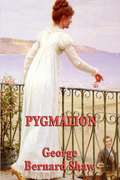Special Collections
Teacher Recommended Reading: Grades 9-12
- Table View
- List View
Things Fall Apart
by Chinua AchebeTHINGS FALL APART tells two overlapping, intertwining stories, both of which center around Okonkwo, a "strong man" of an Ibo village in Nigeria.
The first of these stories traces Okonkwo's fall from grace with the tribal world in which he lives, and in its classical purity of line and economical beauty it provides us with a powerful fable about the immemorial conflict between the individual and society.
The second story, which is as modern as the first is ancient, and which elevates the book to a tragic plane, concerns the clash of cultures and the destruction of Okonkwo's world through the arrival of aggressive, proselytizing European missionaries.
These twin dramas are perfectly harmonized, and they are modulated by an awareness capable of encompassing at once the life of nature, human history, and the mysterious compulsions of the soul.
THINGS FALL APART is the most illuminating and permanent monument we have to the modern African experience as seen from within.
[This text is listed as an example that meets Common Core Standards in English language arts in grades 9-10 at http://www.corestandards.org.]
Song of Solomon
by Toni MorrisonMilkman Dead was born shortly after a neighborhood eccentric hurled himself off a rooftop in a vain attempt at flight. For the rest of his life he, too, will be trying to fly. With this brilliantly imagined novel, Toni Morrison transfigures the coming-of-age story as audaciously as Saul Bellow or Gabriel García Márquez. As she follows Milkman from his rustbelt city to the place of his family's origins, Morrison introduces an entire cast of strivers and seeresses, liars and assassins, the inhabitants of a fully realized black world.
I Heard the Owl Call My Name
by Margaret CravenA novel about the clash of the ancient culture versus the modern culture of the Indians of the Pacific Northwest.
Great Expectations
by Charles DickensPip, a poor orphan being raised by a cruel sister, does not have much in the way of great expectations between his terrifying experience in a graveyard with a convict named Magwitch and his humiliating visits with the eccentric Miss Havisham's beautiful but manipulative niece, Estella, who torments him until he is elevated to wealth by an anonymous benefactor. Full of unforgettable characters, Great Expectations is a tale of intrigue, unattainable love, and all of the happiness money can't buy. Great Expectations has the most wonderful and most perfectly worked-out plot for a novel in the English language, according to John Irving, and J. Hillis Miller declares, Great Expectations is the most unified and concentrated expression of Dickens's abiding sense of the world, and Pip might be called the archetypal Dickens hero.From the Trade Paperback edition.
The Taming of the Shrew
by William ShakespeareThis controversial comedy--the inspiration for such modern works as Kiss Me, Kate and 10 Things I Hate About You--follows the tumultuous courtship and marriage of Petruchio and the headstrong Katherina. Also included in this editon are commentaries by Richard Hosley, Germaine Greer, and others, as well as a stage and screen history and an overview of Shakespeare's life.
The Sun Also Rises
by Ernest HemingwayThe only authorized edition of Ernest Hemingway&’s first novel. &“The ideal companion for troubled times: equal parts Continental escape and serious grappling with the question of what it means to be, and feel, lost.&” —The Wall Street JournalThe Sun Also Rises is a classic example of Hemingway&’s spare but powerful writing style. It celebrates the art and craft of Hemingway&’s quintessential story of the Lost Generation—presented by the Hemingway family with illuminating supplementary material from the Hemingway Collection at the John F. Kennedy Library. A poignant look at the disillusionment and angst of the post-World War I generation, the novel introduces two of Hemingway&’s most unforgettable characters: Jake Barnes and Lady Brett Ashley. The story follows the flamboyant Brett and the hapless Jake as they journey from the wild nightlife of 1920s Paris to the brutal bullfighting rings of Spain with a motley group of expatriates. It is an age of moral bankruptcy, spiritual dissolution, unrealized love, and vanishing illusions. First published in 1926, The Sun Also Rises is &“an absorbing, beautifully and tenderly absurd, heartbreaking narrative...a truly gripping story, told in lean, hard, athletic prose&” (The New York Times). The Hemingway Library Edition commemorates Hemingway&’s classic novel with a personal foreword by Patrick Hemingway, the author&’s sole surviving son, and an introduction by Sean Hemingway, grandson of the author. Hemingway considered the extensive rewriting that he did to shape his first novel the most difficult job of his life. Early drafts, deleted passages, and possible titles included in this new edition elucidate how the author achieved his first great literary masterpiece.
A Farewell to Arms
by Ernest Hemingway and Sean Hemingway and Patrick HemingwayWritten when Ernest Hemingway was thirty years old and lauded as the best American novel to emerge from World War I, A Farewell to Arms is the unforgettable story of an American ambulance driver on the Italian front and his passion for a beautiful English nurse. Set against the looming horrors of the battlefield--weary, demoralized men marching in the rain during the German attack on Caporetto; the profound struggle between loyalty and desertion--this gripping, semiautobiographical work captures the harsh realities of war and the pain of lovers caught in its inexorable sweep. Ernest Hemingway famously said that he rewrote the ending to A Farewell to Arms thirty-nine times to get the words right. This edition collects all of the alternative endings together for the first time, along with early drafts of other essential passages, offering new insight into Hemingway's craft and creative process and the evolution of one of the greatest novels of the twentieth century. Featuring Hemingway's own 1948 introduction to an illustrated reissue of the novel, a personal foreword by the author's son Patrick Hemingway, and a new introduction by the author's grandson Seán Hemingway, this edition of A Farewell to Arms is truly a celebration.
Tess of the D'Urbervilles
by Thomas HardyHardy's famous classic, an intimate portrait of a woman who is one of literature's most admirable and tragic heroines
Crime and Punishment
by Fyodor Dostoyevsky and Constance Garnett[This text is listed as an example that meets Common Core Standards in English language arts in grades 11-12 at http://www.corestandards.org.]
Flowers for Algernon
by Daniel KeyesOscar-winning film Charly starring Cliff Robertson and Claire Bloom-a mentally challenged man receives an operation that turns him into a genius...and introduces him to heartache.
Hiroshima
by John HerseyMemories and tales from the survivors of the atomic bomb dropped on Hiroshima on August 6, 1945. 37 years later, Hersey went back to Japan. The final chapter is what he found there.
Richard III
by William ShakespeareRichard III, the hunchback Duke of Gloucester, becomes King Richard III through a series of manipulations and evil schemes. His ambition is the driving force for the plot and he finds little to stand in his way as he strives for domination of all of England.
Siddhartha
by Hermann Hesse and Hilda RosnerA book--rare in our arid age--that takes root in the heart and grows there for a lifetime. Here the spirituality of the East and the West have met in a novel that enfigures deep human wisdom with a rich and colorful imagination. Written in a prose of almost biblical simplicity and beauty, it is the story of a soul's long quest in search of he ultimate answer to the enigma of man's role on this earth. As a youth, the young Indian Siddhartha meets the Buddha but cannot be content with a disciple's role: he must work out his own destiny and solve his own doubt--a tortuous road that carries him through the sensuality of a love affair with the beautiful courtesan Kamala, the temptation of success and riches, the heartache of struggle with his own son, to final renunciation and self-knowledge. The name "Siddhartha" is one often given to the Buddha himself--perhaps a clue to Hesse's aims in contrasting the traditional legendary figure with his own conception, as a European (Hesse was Swiss), of a spiritual explorer.
The Count of Monte Cristo
by Alexandre DumasFrom the back cover: Dumas' epic tale of suffering and retribution, inspired by a real-life tale of wrongful imprisonment was a huge popular success when it was first serialized in the 1840s.
Fahrenheit 451
by Ray BradburyRay Bradbury's internationally acclaimed novel Fahrenheit 451 is a masterwork of 20th century literature set in a bleak, dystopian future.
Guy Montag is a fireman. In his world, where television rules and literature is on the brink of extinction, firemen start fires rather than put them out. His job is to destroy the most illegal of commodities, the printed book, along with the houses in which they are hidden.
Montag never questions the destruction and ruin his actions produce, returning each day to his bland life and wife, Mildred, who spends all day with her television "family." But then he meets an eccentric young neighbor, Clarisse, who introduces him to a past where people didn't live in fear and to a present where one sees the world through the ideas in books instead of the mindless chatter of television.
When Mildred attempts suicide and Clarisse suddenly disappears, Montag begins to question everything he has ever known. He starts hiding books in his home, and when his pilfering is discovered, the fireman has to run for his life.
Hugo Award winner.
The Tempest
by William ShakespeareThis bewitching play, Shakespeare's final work, articulates a wealth of the playwright's mature reflections on life and contains some of his most familiar and oft-quoted lines. The story concerns Miranda, a lovely young maiden, and Prospero, her philosophical old magician father, who dwell on an enchanted island, alone except for their servants — Ariel, an invisible sprite, and Caliban, a monstrous witch's son. Into their idyllic but isolated lives comes a shipwrecked party that includes the enemies who usurped Prospero's dukedom years before, and set him and his daughter adrift on the ocean. Also among the castaways is a handsome prince, the first young man Miranda has ever seen. Comedy, romance, and reconciliation ensue, in a masterly drama that begins with a storm at sea and concludes in joyous harmony.
Oliver Twist
by Charles DickensDicken's classic tale of orphan Oliver who escapes from the workhouse and finds himself among a den of thieves. Set in 19th century London.
Brave New World
by Aldous HuxleyAldous Huxley's tour de force, Brave New World is a darkly satiric vision of a "utopian" future--where humans are genetically bred and pharmaceutically anesthetized to passively serve a ruling order.
A powerful work of speculative fiction that has enthralled and terrified readers for generations, it remains remarkably relevant to this day as both a warning to be heeded as we head into tomorrow and as thought-provoking, satisfying entertainment.
The Metamorphosis and Other Stories
by Franz KafkaThe Metamorphosis is the story of a young man who, transformed overnight into a giant beetlelike insect, becomes an object of disgrace to his family, an outsider in his own home, a quintessentially alienated man. [This text is listed as an example that meets Common Core Standards in English language arts in grades 9-10 at http://www.corestandards.org.]
Pygmalion
by George Bernard ShawPygamalion tells the story of Henry Higgins, a professor of phonetics, who makes a bet with his friend Colonel Pickering that he can successfully pass off a Cockney flower girl, Eliza Doolittle, as a refined society lady by teaching her how to speak with an upper class accent and training her in etiquette. In the process, Higgins and Doolittle grow close, but she ultimately rejects his domineering ways and declares she will marry Freddy Eynsford-Hill-- a young, poor gentleman.
The Jungle
by Upton SinclairBack cover: Upton Sinclair's unflinching chronicle of crushing poverty and oppression set in Chicago in the early 1900s.
The Deerslayer
by James Fenimore CooperBook Description In this final volume in the Leatherstocking saga, the Indian-raised Deerslayer has become a man of courage and moral certainty-and he emerges from tribal warfare with nobility as pure and proud as the wilderness whose fierce beauty and freedom have claimed his heart.
